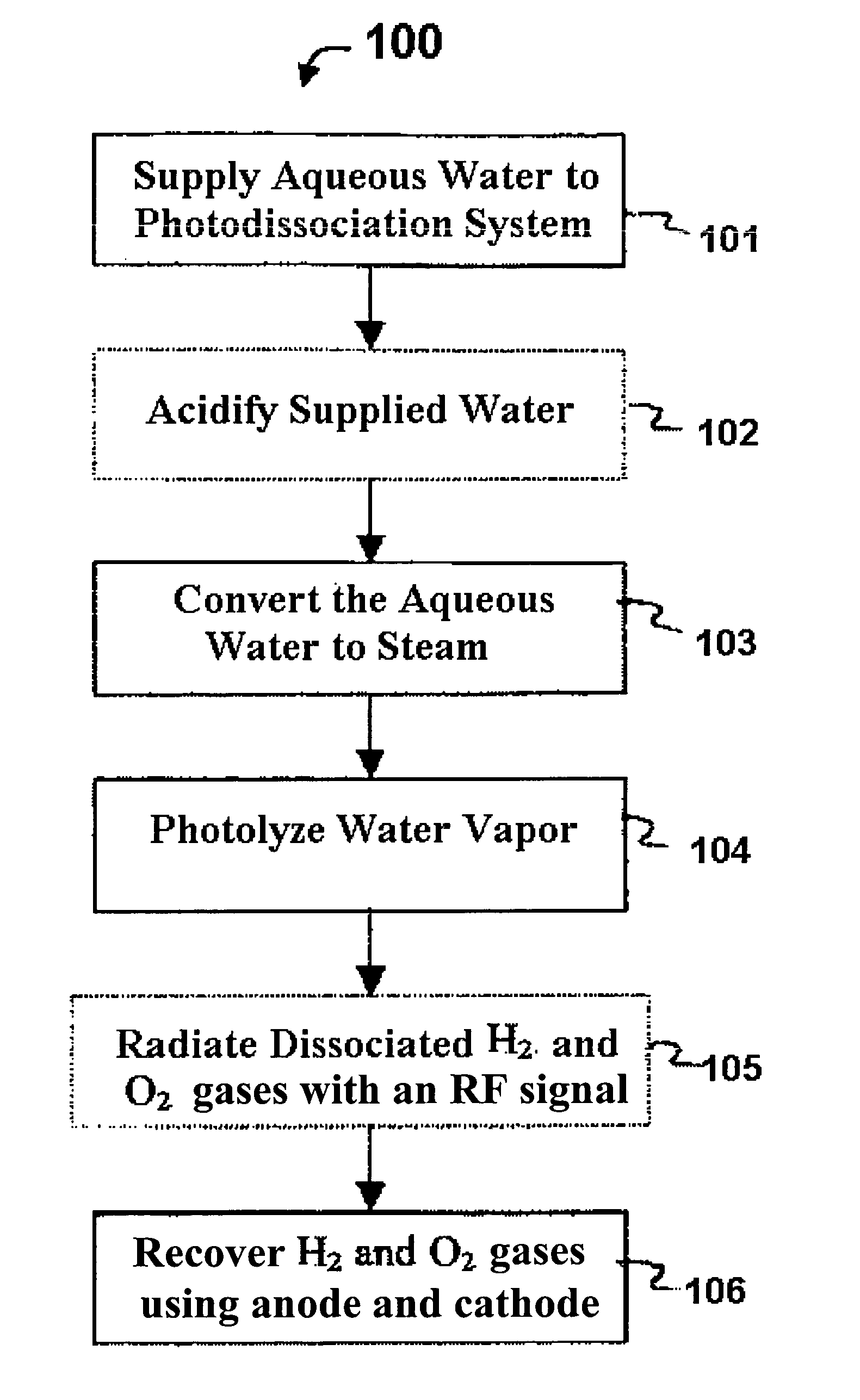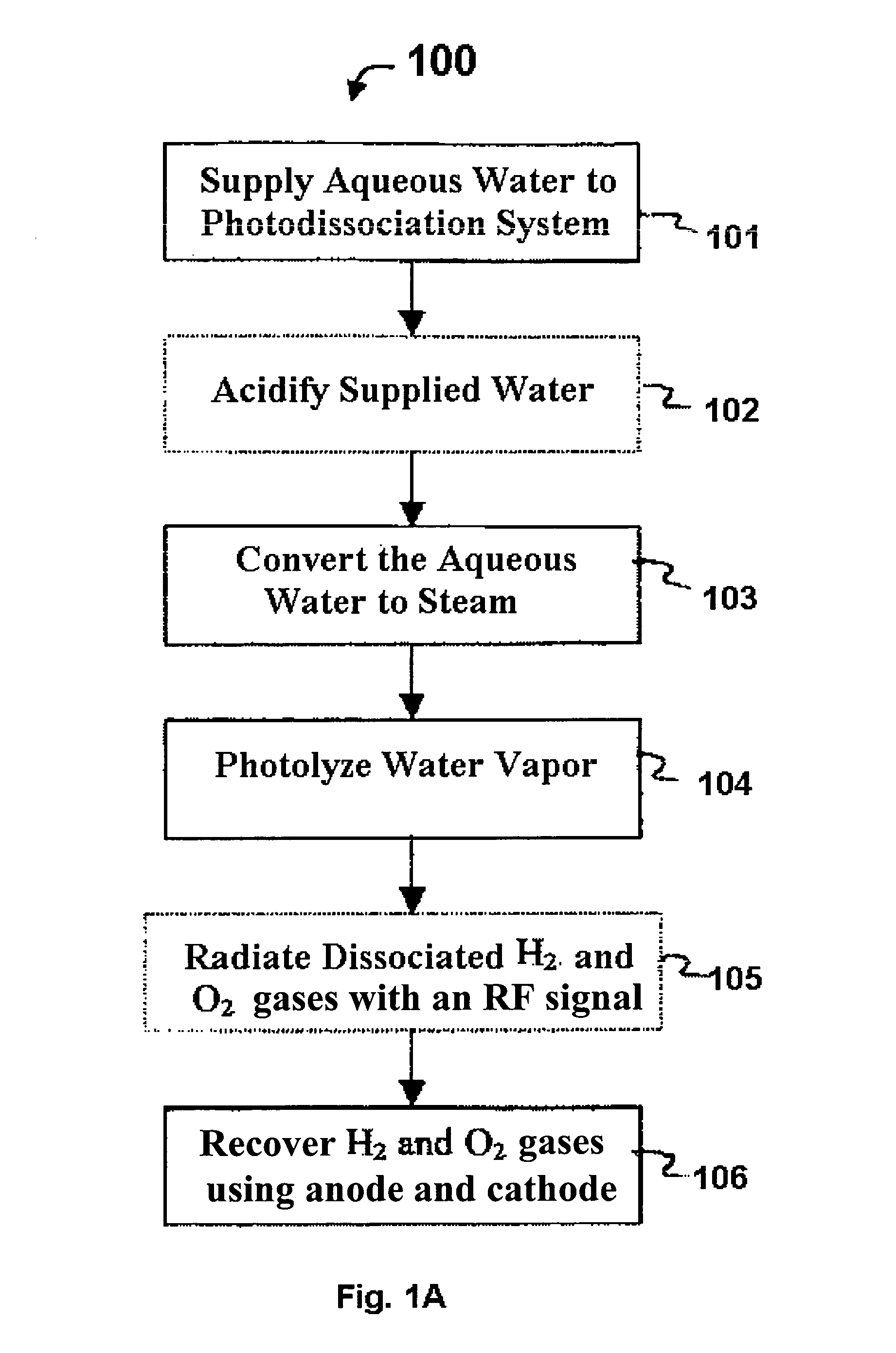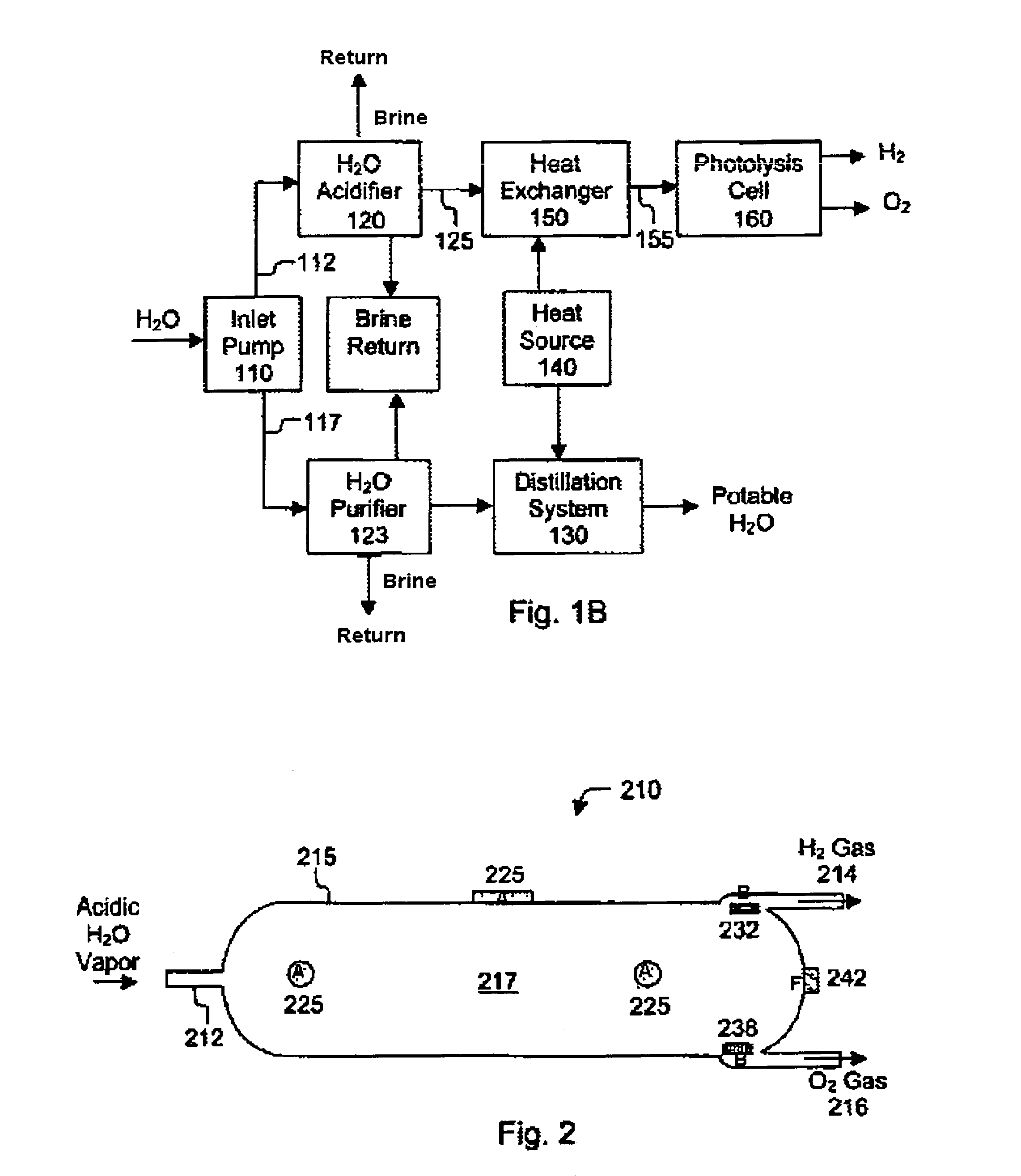Methods for affecting the ultra-fast photodissociation of water molecules
a water molecule and ultra-fast technology, applied in the field of photodissociation processes, can solve the problems of lack of gas purity in the gas separation process, excessive hydrogen cost in systems using ultraviolet light sources, material and maintenance cost of systems employing catalysts, etc., and achieves the effect of fast dissociation of water molecules, lower cost, and higher purity
- Summary
- Abstract
- Description
- Claims
- Application Information
AI Technical Summary
Benefits of technology
Problems solved by technology
Method used
Image
Examples
Embodiment Construction
[0016]The energy required to dissociate the water molecule has previously been cost prohibitive to obtain hydrogen as a fuel, as the energy required to produce the H2 fuel has been greater than the energy provided by the H2 fuel produced. The present invention now describes a system which utilizes molecular water in a controlled state, specifically acidic water vapor, to more efficiently produce H2 fuel. Acidic water, which includes the proton acid H3O+, is vaporized to produce the dihydronium molecule H5O2. The dihydronium molecule H5O2 requires much less energy to split compared to H2O, as the dihydronium molecule presents a much larger target for photodissociation, and its bonds lengths are stretched in its vapor phase state.
[0017]Previous drawbacks of photodissociation systems have included the almost immediate recombination of the H2 and O2 constituents. The present invention employs a radiolysis approach in which the dissociated H2 and O2 constituents are bombarded with RF fre...
PUM
| Property | Measurement | Unit |
|---|---|---|
| Length | aaaaa | aaaaa |
| Frequency | aaaaa | aaaaa |
| Frequency | aaaaa | aaaaa |
Abstract
Description
Claims
Application Information
 Login to View More
Login to View More - R&D
- Intellectual Property
- Life Sciences
- Materials
- Tech Scout
- Unparalleled Data Quality
- Higher Quality Content
- 60% Fewer Hallucinations
Browse by: Latest US Patents, China's latest patents, Technical Efficacy Thesaurus, Application Domain, Technology Topic, Popular Technical Reports.
© 2025 PatSnap. All rights reserved.Legal|Privacy policy|Modern Slavery Act Transparency Statement|Sitemap|About US| Contact US: help@patsnap.com



